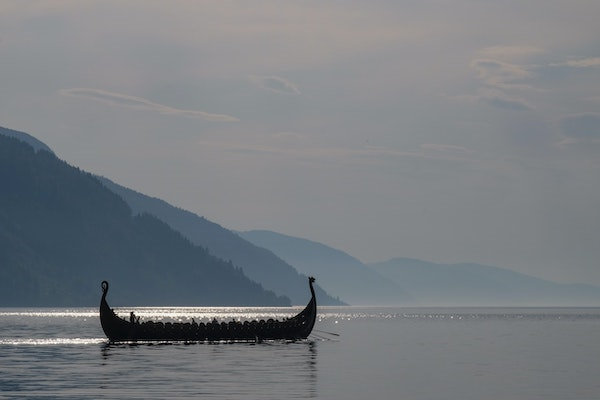
For reasons unknown, it’s generally accepted that the first Vikings were simple folk that lived by a simple ethos. However, the truth is that the men and women that first settled Iceland were an extremely complex people. With their vast array of traditions and cultural practices that we are only beginning to truly understand in recent years.
So, with this in mind, we decided to take a closer look at the most popular Viking traditions and how in some cases, we can relate them to modern day society. For example, did you know that Viking tactics were similar to chess or Poker strategy?
Exploring
It’s a well-known fact that Vikings loved to explore. As you may well know, the first Icelandic settlers were Vikings. Naddodd the Viking is said to have discovered Iceland some time in the 9th century. He was said to have been blown off course on his way to the Faroe Islands. Gadar the Swede followed a little later but both were avid explorers. The first permanent settler, however was the chieftain Ingólfur Arnarson, who sailed to Iceland in 1874.
Discovering Iceland was only a very small part of the exploration work carried out by the Iceland Vikings. They were so enamored by finding new lands that they shipped goods all over Europe and Western Asia, while some even made it as far as North America.
Their habit of setting out to discover and then settle in new lands preceded the major European colonizers. Portugal, France, and the early Ottoman Empire where proceeded by centuries. They were by all accounts the original colonizers, while later empires had more materialistic reasons for colonization, the Vikings simply enjoyed discovering new places.
There was a clear need to explore and colonize to gain better farmlands and crops according to Viking Sagas. Here is the will to survive, hard at work. You will probably not find more devoted workers than in Iceland.... in our opinion!
Raiding
When we think of Vikings, we usually think of the berserker warriors raiding without any apparent thought to what they’re doing. However, while there were indeed many such warriors who lived as their totem animal would have. The Viking raiding tactics were actually extremely well planned.
In fact, some might even suggest that if Iceland Vikings were alive today, they would be pretty good poker players or even masters of chess. Of course, this seems at complete odds with everything we know about their activities, but it’s true, nonetheless. Their ability to be aggressive, while also knowing when to pick and choose their battles.
Fighting
It’s not so easy to live a life dependent on raiding unless your tribe is well-trained in the art of fighting. But while other people spent more time on honing their skills through martial training, Iceland Vikings took things to an entirely new level.
As we mentioned earlier, the berserker warriors were the most feared of all Vikings, and with good reason. These men were said to have adopted a certain animal as their totem. Most commonly it was a bear, wolf, or boar.
They would go through a symbolic death and rebirth during which they would take on the powers of the totem. They would wear the animal’s hide during battle and attack without any apparent reasoning or tactics. In other words, they would act like wild animals.
This made berserkers the most feared warriors in the world. As a result, the name instilled fear into the enemies of the Vikings. Of course, not all Vikings were berserkers but they were, for the most part, impressive fighters. They had little or no fear of death which made them terrible adversaries in battle.
Appeasing the Norse Gods

This is perhaps the one area of Iceland Vikings society that had the most impact on how the people lived their lives. The Vikings were fiercely devout in the worship of their deities and, as such, they had numerous traditions designed to appease the Gods to bring good fortune.
These traditions had a major impact on every member of society, but some more than most. For example, rituals sometimes required a sacrifice, which was often a member of the tribe or a slave snatched during a raid.
They also held a ceremony called the Blot (Þorrablót) a mid-winter festival. This ritual involved the sacrifice of animals at a temple before the meat was then cooked and served to the local community. This was said to give thanks to the Gods. In a way, is a little similar to modern-day Thanksgiving or Harvest festivals.
When it came to seeing off their dead, the Vikings Sagas were equally celebratory. They would cremate higher ranking men on their ships complete with all of their valuables. Often a slave burnet with them to serve them in the afterlife. The local community rejoiced in death as a new beginning, which goes a long way to explain the apparent fearlessness of the warriors as they went into battle.
As you can see, the Vikings were by no means the simple warrior tribes that film and stories would have you believe. They were a complex and most interesting people that we may never fully understand.